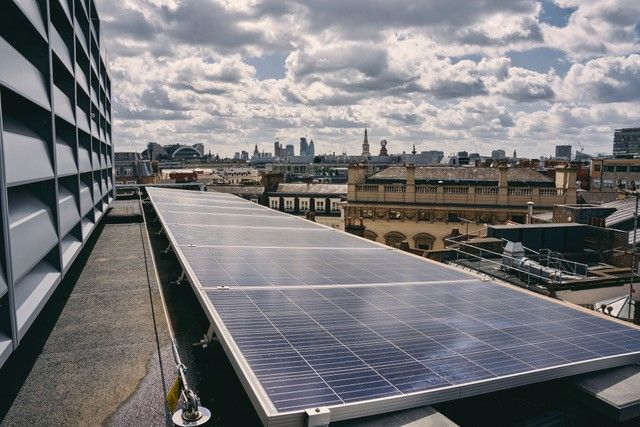With Scope 3 emissions making up around 70% of operational emissions and building regulations honing in on energy efficiency, achieving net zero in real estate is not without its challenges.
Here, Michael Morris, CEO at UK commercial property REIT Picton, answers ESG Clarity‘s questions on carbon emissions, renewables, regulation and net-zero targets.
Can you provide some detail on the real estate sector’s contribution to climate change?
The headline figure widely quoted is that the built environment generates around 40% of annual global CO2 emissions. When this is unpacked, it includes residential and commercial emissions, operational carbon – meaning the actual running of buildings, but also embodied carbon – which is associated with construction and the production of building materials.
In the UK, the Green Building Council has calculated that commercial buildings represent 23% of total built environment emissions, and within this the split between operational and embodied carbon emissions is roughly 70/30.
Reducing operational emissions can be achieved by improving a building’s energy efficiency and the use of renewables, whereas embodied carbon emissions can be decreased by using lower carbon building materials and extending a building’s life through refurbishing and repurposing, rather than demolishing and building from scratch. Historically, key building materials such as concrete and steel have particularly high carbon emissions.
Although real estate is typically a long-life asset, the use of circular economic principles instead of employing a ‘take make waste’ approach is becoming increasingly relevant, where owners should prioritise refurbishment over redevelopment.

Why are Scope 3 emissions so significant (occupier emissions)?
Scope 3 makes up the bulk of operational carbon emissions. For Picton, Scope 3 makes up over 70% of our total operational emissions, so are very significant. However, Scope 3 emissions can be difficult to measure without constructive collaboration between occupiers and owners.
For example, a landlord can provide a highly energy efficient A-rated EPC building, but if an occupier chooses to install an inefficient fit-out, overheat it or leave lights on when not used, it will still have higher fix this.
Collection of occupier energy data to measure progress can also be a challenge, but green lease clauses and technology such as automatic meter readings make this process smoother.
A lot of property companies have different set timelines for becoming carbon net-zero. Do you think these are realistic, over, or under-ambitious?
Different timelines don’t just reflect the extent of a company’s commitment. Shorter timelines often exclude embodied carbon or occupier emissions, so could be seen as unambitious. Offsetting is a long way from the fix-all solution.
The industry-recognised approach is to go through a hierarchy of actions. Typically, this starts with steps to reduce embodied carbon, increase energy efficiency, increase the supply of on-site renewables, maximise off-site renewable energy production and then offsetting any remaining carbon using high quality, approved offsets. This is the Better Buildings Partnership approach that Picton is following.
What challenges are you seeing?
None of the challenges we have experienced implementing a net-zero strategy are insurmountable. Occupier willingness to engage on Scope 3 emissions is becoming less of a challenge, as rising energy prices and opportunities to save on costs are changing the dialogue.
Another key area worth mentioning is the potential future changes in MEES regulations and the minimum required energy performance certificate (EPC) ratings. Over 70% of the portfolio by rental value rated EPC C or above; however, we will be reliant on future lease events or occupiers in situ allowing us to make any required improvements to units where the EPC will eventually fall short of what is legally required.
Some asset types are better suited to energy efficiency improvements. For example, the roof space available to install solar panels is greater on most industrial units than on office buildings. In terms of timescales, there is also a balance to strike, as it is inefficient from an embodied carbon emissions perspective to replace equipment ahead of its end of life.
How are you making your plans a reality?
We are taking a holistic approach, trying to fully understand the risks and how to mitigate climate change.
We are also thinking more widely about climate risks and factoring that into our decision-making surrounding acquisitions and investment into the portfolio. It’s all about future-proofing, however that future might look.
It is more than just about becoming net-zero carbon; there is the E, S and G to fully embed into our strategy and business model. The board is fully engaged and ESG remains a key focus, and all our staff have undertaken appropriate training and sustainability forms a sizeable part of our asset level business planning.
As part of the real estate industry, we are committed to knowledge-sharing, communication and developing our understanding in order to make meaningful improvements.








